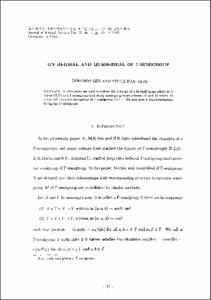견관절 통증을 동반한 환자에서의 상극근 건파열에 관한 고찰
- Alternative Title
- A Clinical Study about Supraspinatus Tendon Tear in the Patients with Shoulder Pain
- Abstract
- Shoulder pain is the common problem and debilitating problem. And its etiology remains poorly understood. One of the etiology is the rotator cuff tear.
Arthrography has been considered standard diagnostic method for detecting cuff tear but it is invasive.
So, we performed non-invasive sonographic examination on the 160 shoulders-84 painful shoulders, 76 asymptomatic shoulders-from 80 patients with painful shoulder. We grouped 80 patients into three, group one is the 20 hemiplegic patients older than 50 years, group two is the 40 non-hemiplegic patients older than 50 years, group three is the 20 non-hemiplegic patients younger than 50 years. Mean age was 61.9, 60.0 and 37.8 year old in each group
The rate of the positive sonographic finding of supraspinatus tendon tear was 70%, 72.5% and 50% in each group. The pain was highly correlated with the supraspinatus tendon tear findings on the sonography(P<0.01)
We checked variable factors such as aging, hemiplegic condition, limited range of motion, history of trauma whether or not affect the supraspinatus tendon tear incidence. The aging was the only possible affecting factor that increase the incidence of supraspinatus tendon tear in our study.
Shoulder pain is the common problem and debilitating problem. And its etiology remains poorly understood. One of the etiology is the rotator cuff tear.
Arthrography has been considered standard diagnostic method for detecting cuff tear but it is invasive.
So, we performed non-invasive sonographic examination on the 160 shoulders-84 painful shoulders, 76 asymptomatic shoulders-from 80 patients with painful shoulder. We grouped 80 patients into three, group one is the 20 hemiplegic patients older than 50 years, group two is the 40 non-hemiplegic patients older than 50 years, group three is the 20 non-hemiplegic patients younger than 50 years. Mean age was 61.9, 60.0 and 37.8 year old in each group
The rate of the positive sonographic finding of supraspinatus tendon tear was 70%, 72.5% and 50% in each group. The pain was highly correlated with the supraspinatus tendon tear findings on the sonography(P<0.01)
We checked variable factors such as aging, hemiplegic condition, limited range of motion, history of trauma whether or not affect the supraspinatus tendon tear incidence. The aging was the only possible affecting factor that increase the incidence of supraspinatus tendon tear in our study.
- Issued Date
- 1993
- Type
- Research Laboratory
- Alternative Author(s)
- Huh,Eun-Sun; Nam,Yong-Hyun; Seong,In-Young
- Publisher
- 울산의대학술지
- Language
- kor
- Rights
- 울산대학교 저작물은 저작권에 의해 보호받습니다.
- Citation Volume
- 2
- Citation Number
- 1
- Citation Start Page
- 83
- Citation End Page
- 88
- Appears in Collections:
- Research Laboratory > The ULSAN university medical journal
- 파일 목록
-
-
Download
 000002025465.pdf
기타 데이터 / 179.59 kB / Adobe PDF
000002025465.pdf
기타 데이터 / 179.59 kB / Adobe PDF
-
Items in Repository are protected by copyright, with all rights reserved, unless otherwise indicated.